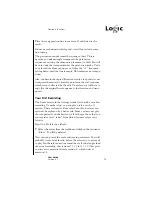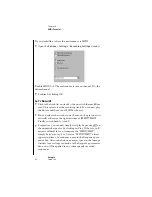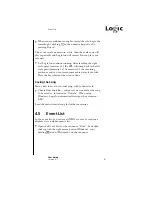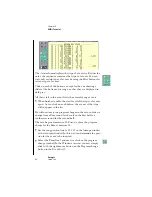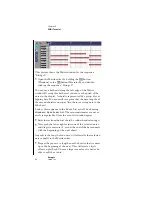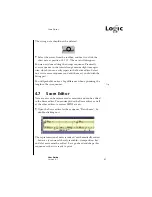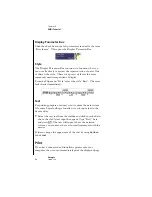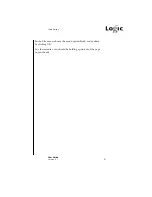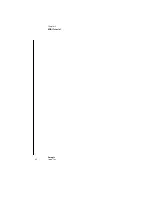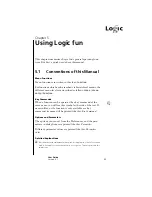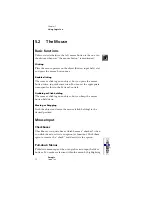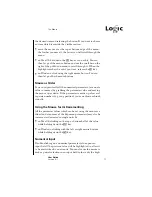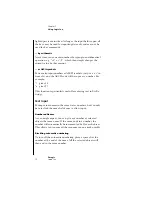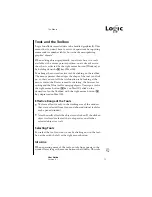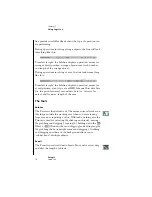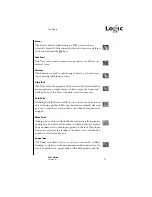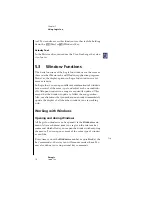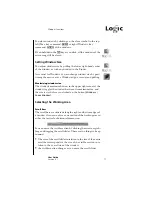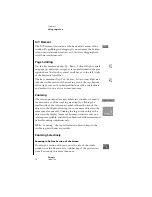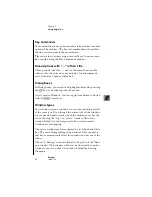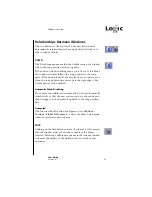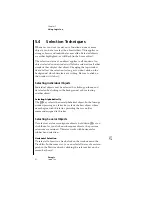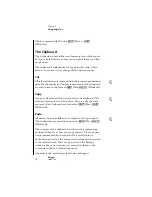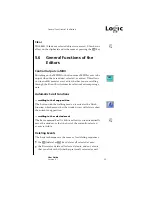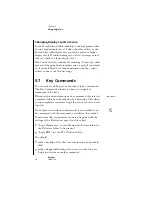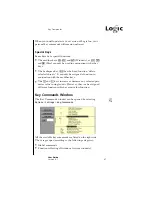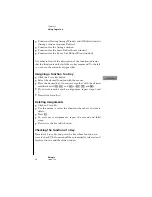
The Mouse
73
User Guide
Version 4.1
r
Tools and the Toolbox
Logic fun allows recorded data to be handled graphically. This
means that you don’t have to carry out operations by inputting
commands via number tables, but rather by manipulating
graphic “objects”.
When editing objects graphically, you always have two tools
available at the mouse pointer position: one is already active,
the other is activated by the right mouse button (Windows) or
by holding down the
C
key (MacOS).
You change the currently active tool by clicking on the toolbox.
The mouse pointer then adopts the shape of the tool you click
on, so that you can tell what its function is by looking at the
mouse cursor: the Eraser is used for deleting, the Scissors for
cutting and the Glue tool for merging objects. To assign a tool to
the right mouse button (
C
key on MacOS), click on the
desired tool in the Toolbox, with the right mouse button (
C
key depressed on MacOS).
Effective Range of the Tools
•
Tools are effective only in the working area of the window
they were selected from (you can define individual tools for
each opened window).
•
A tool basically affects the objects you click on. If the clicked
object is already selected, the tool operates on all other
selected objects as well.
Selecting Tools
You select the tool you want to use by clicking on it in the tool-
box, either with the left or the right mouse button.
Info Line
When operating many of the tools, an info line appears in the
window for as long as the mouse button is held down. This info
X
Summary of Contents for Logic fun
Page 1: ...E Sof t und Hard wa re Gmb H l User Guide for Logic fun Version 4 1 March 2000 English ...
Page 2: ......
Page 6: ......
Page 8: ...Emagic Logic fun 8 ...
Page 26: ...22 Chapter 1 Features Emagic Logic fun ...
Page 38: ...34 Chapter 2 Sound Cards and MIDI Emagic Logic fun ...
Page 48: ...44 Chapter 3 Getting Started Emagic Logic fun ...
Page 72: ...68 Chapter 4 MIDI Tutorial Emagic Logic fun ...
Page 96: ...92 Chapter 5 Using Logic fun Emagic Logic fun ...
Page 110: ...106 Chapter 6 Transport Functions Emagic Logic fun ...
Page 140: ...136 Chapter 8 Audio Basics Emagic Logic fun ...
Page 162: ...158 Chapter 10 Mixer and Effects Emagic Logic fun ...
Page 174: ...170 Chapter 11 The Event List Emagic Logic fun ...
Page 206: ...202 Chapter 13 The Score Editor Emagic Logic fun ...
Page 224: ...220 Chapter 15 Video and MIDI Files Emagic Logic fun ...
Page 240: ...236 Glossary Emagic Logic fun ...
Page 256: ...252 Index Emagic Logic fun ...

